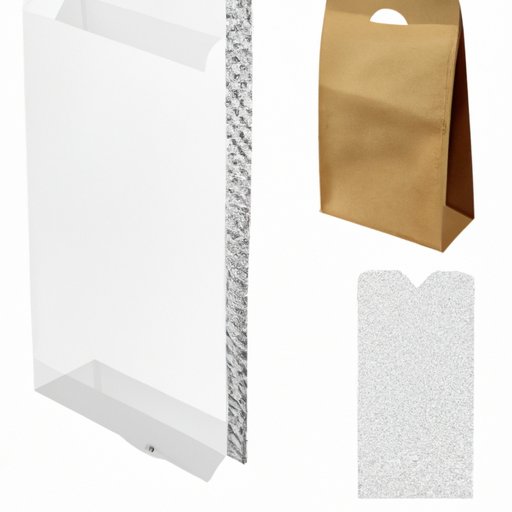
Introduction
Transparency in images has become increasingly popular in recent years, especially in graphic designing. Being able to remove the background of an image to make it transparent allows for a more professional and sophisticated look, and creates greater flexibility in design. In this article, we will explore various methods and tools to make transparent backgrounds in images.
Using Adobe Photoshop
Adobe Photoshop is a popular software among designers and artists for its versatility and powerful editing tools. Follow these steps to remove the background of an image:
- Open the image in Adobe Photoshop.
- Select the Magic Wand tool from the toolbar on the left.
- Click on the background you want to remove. This will select the entire background area.
- Press the Delete key on your keyboard. The background will disappear, leaving the object with a checkered background, indicating transparency.
- Save the image in a format that supports transparency, such as PNG or GIF.
Tip: If the image has intricate edges or has fine details, the Magic Wand tool may not be sufficient, and you can use other tools in Adobe Photoshop, such as the Lasso tool or the Pen tool, to trace around the object and remove the background.
Using Canva
Canva is an online graphic design tool that contains various features and tools to create professional-looking designs. Here’s how to make a transparent background using Canva:
- Open Canva and create a new design.
- Upload the image you wish to edit.
- Select the image and click on the ‘Remove background’ button on the top left corner of the toolbar.
- Adjust the editor’s boundaries as needed, zooming in and out to ensure the object is isolated.
- When satisfied with the changes, download the image in PNG format, which supports transparency.
Using GIMP
GIMP is a free and open source image editing software with powerful features similar to Adobe Photoshop. Here’s how to make a transparent background using GIMP:
- Open the image in GIMP.
- Select the background using the Magic Wand tool or by selecting it manually using the Lasso or Pen tool.
- Click on the Eraser tool and remove the selected background.
- Save the image in a format that supports transparency, such as PNG or GIF.
Tip: GIMP also has a feature called Layer Masks, which allows you to erase backgrounds without permanently deleting them. This is useful if you need to make adjustments later on.
Using Microsoft PowerPoint
Microsoft PowerPoint is primarily used for creating presentations, but it also has a handful of image editing features. Here’s how to make a transparent background using PowerPoint:
- Open PowerPoint and create a new slide.
- Insert the image you want to edit.
- Select the image and click on the ‘Remove background’ button on the toolbar.
- Use the Mark Areas to Keep and Mark Areas to Remove tools to adjust the background as needed.
- When finished, save the image in a format that supports transparency, such as PNG or GIF.
Mobile Apps
There are also mobile applications that allow you to remove backgrounds from images on your iOS or Android devices. Here are a few recommended apps:
- Background Eraser
- Remini
- Snapseed
Follow these easy steps to remove backgrounds using any of these apps:
- Download and install the app of your choice.
- Select the photo to edit by importing it from your device’s gallery or taking a new photo.
- Choose the ‘Remove Background’ feature in the app.
- Adjust the boundaries to isolate the object from the background.
- Save the edited image in a format that supports transparency, such as PNG or SVG.
Using CorelDRAW
CorelDRAW is a popular graphic design software with many features similar to Adobe Illustrator. Here’s how to use the Magic Wand tool to make a transparent background in CorelDRAW:
- Open CorelDRAW and import the image you want to edit.
- Select the Magic Wand tool from the toolbox on the left.
- Click on the background to be removed.
- Press the Delete key on your keyboard to remove the selected background.
- Save the image in a format that supports transparency, such as PNG or GIF.
File Formats
It’s important to save your images in a format that supports transparency to preserve the edited background. Some common file formats that support transparency include:
- PNG
- SVG
- GIF
When saving the image, be sure to select the appropriate format and double-check that the transparent background has been preserved.
Conclusion
Removing the background from an image to make it transparent has become an essential skill for designers and artists alike. By using the various methods and tools outlined above, anyone can make a background transparent with ease. However, experimentation with different methods is encouraged to find what works best for individual needs. With these tools at your disposal, you can create professional and sophisticated designs that stand out.




